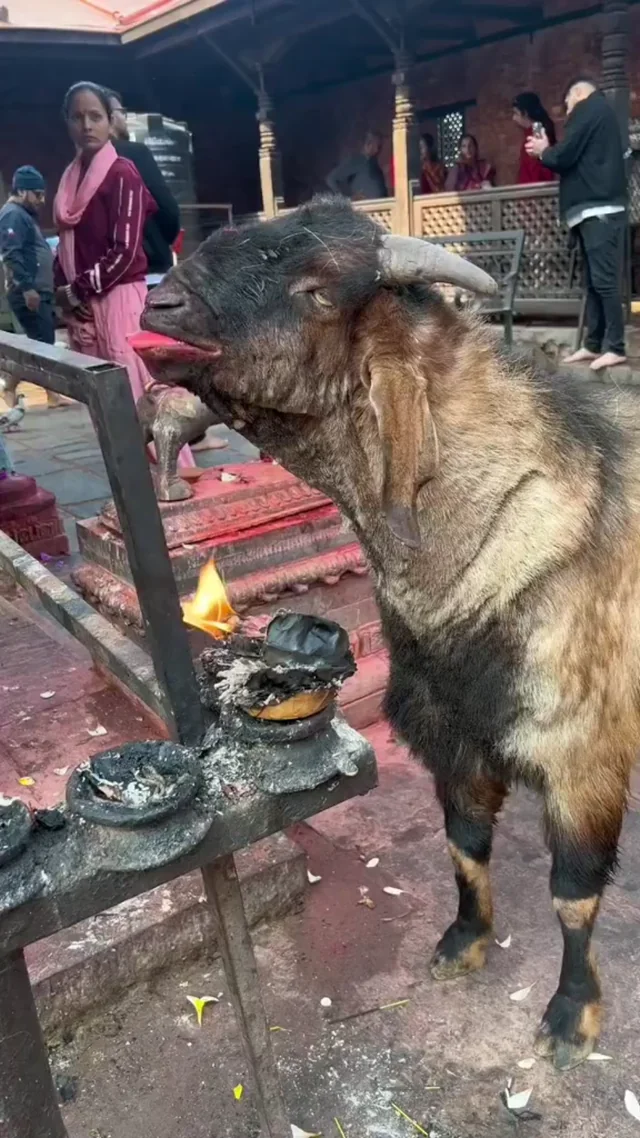Goats are fascinating creatures, known for their quirky habits and adaptable nature. One particularly intriguing behavior is the idea of goats seemingly “roasting their chins” over an open fire. While this might sound absurd, it raises interesting questions about animal behavior, environmental adaptation, and farm life quirks. In this article, we’ll explore the possible reasons behind this phenomenon and its broader implications.

Goats, like many other animals, exhibit behaviors that may appear strange to humans. As curious and intelligent creatures, they often engage in seemingly odd actions driven by instinct or environment.
Curiosity: Goats are naturally inquisitive and may approach open fires out of sheer curiosity. Their exploratory nature leads them to investigate anything unfamiliar in their environment.
Social Behavior: Goats are herd animals. A group dynamic often influences individual actions, so if one goat exhibits unusual behavior, others may follow.
Comfort Seeking: Animals, including goats, are known to seek comfort. An open fire could provide warmth, leading goats to linger nearby during cold weather.
These behavioral traits set the stage for understanding their interactions with environmental elements like fire.
Thermoregulation is the process by which animals maintain their body temperature within a certain range. Goats, especially in colder climates, might instinctively seek heat sources to stay warm.
Heat-Seeking Behavior: Many animals, including goats, exhibit a natural tendency to gravitate towards warmth. This is similar to how reptiles bask in the sun or how mammals cuddle to share body heat.
Adaptive Mechanisms: In cold environments, goats’ behavior around open fires could be an adaptive mechanism for survival. Warming their chin or body might conserve energy otherwise used for generating body heat.
Physical Comfort Zones: Every species has an optimal temperature range for physical activity and rest. An open fire might serve as a microclimate, creating a comfort zone for goats.
The environment where goats live plays a significant role in shaping their behavior. Farm life introduces unique elements, such as open fires, that animals in the wild wouldn't encounter.
Outdoor Animal Care: Farmers often light fires to ward off predators, burn crop residues, or keep warm. Goats, being a part of this ecosystem, interact with these fires in unexpected ways.
Farm Life Quirks: The presence of fires in rural settings often leads to humorous or unusual anecdotes, such as goats seemingly “warming” themselves.
Safety Concerns: While the behavior might appear funny, it’s crucial to consider the safety risks. Farmers should ensure that their animals are not harmed by close proximity to open flames.
Ethology, the study of animal behavior, provides valuable insights into such peculiar actions. By understanding how and why animals act as they do, we can better interpret behaviors like goats lingering near fires.
Instinct vs. Learned Behavior: Are goats naturally drawn to fire, or is this a learned behavior from their surroundings? Ethologists could analyze if goats associate fire with warmth or if it’s purely instinctive.
Comparative Analysis: Comparing goats with other species can also provide clues. For example, dogs and cats are known to sit near heaters, suggesting that mammals share common heat-seeking tendencies.
Goats have long been a part of human folklore, often depicted as mischievous, clever, or magical creatures. Could this “fire-roasting” behavior tie into ancient myths or stories?
Goat Folklore: In some cultures, goats are associated with fiery imagery, such as the Norse god Thor’s chariot pulled by goats. This adds a layer of cultural fascination to their interactions with fire.
Animal Myths: Stories of animals exhibiting human-like behaviors, such as seeking warmth from a fire, often find their way into folklore and viral anecdotes.
Humor in Animal Stories: Goats’ antics, whether real or imagined, contribute to their reputation as entertaining and enigmatic farm animals.
Understanding this behavior isn’t just amusing—it has practical and scientific significance. Observing how animals like goats interact with their environment can inform various fields.
Animal Welfare: Ensuring that goats are kept safe and comfortable in farm settings requires understanding their behavior around potential hazards like fire.
Behavioral Research: Unusual behaviors provide opportunities for scientific study, contributing to our broader understanding of animal cognition and adaptation.
Farm Management: By recognizing goats’ tendencies, farmers can design safer and more efficient environments for their animals.
While the idea of goats roasting their chins over an open fire might initially seem humorous, it sheds light on deeper aspects of animal behavior, environmental adaptation, and human-animal interactions. Whether driven by instinct, comfort-seeking, or sheer curiosity, this behavior is a reminder of the fascinating ways animals navigate their world.
By exploring this topic through the lenses of science, ethology, and folklore, we gain a richer appreciation for these quirky creatures and the environments they inhabit. So next time you see a goat near a fire, take a moment to ponder the complex blend of instincts and adaptations at play.
animal tags: goat
We created this article in conjunction with AI technology, then made sure it was fact-checked and edited by a Animals Top editor.